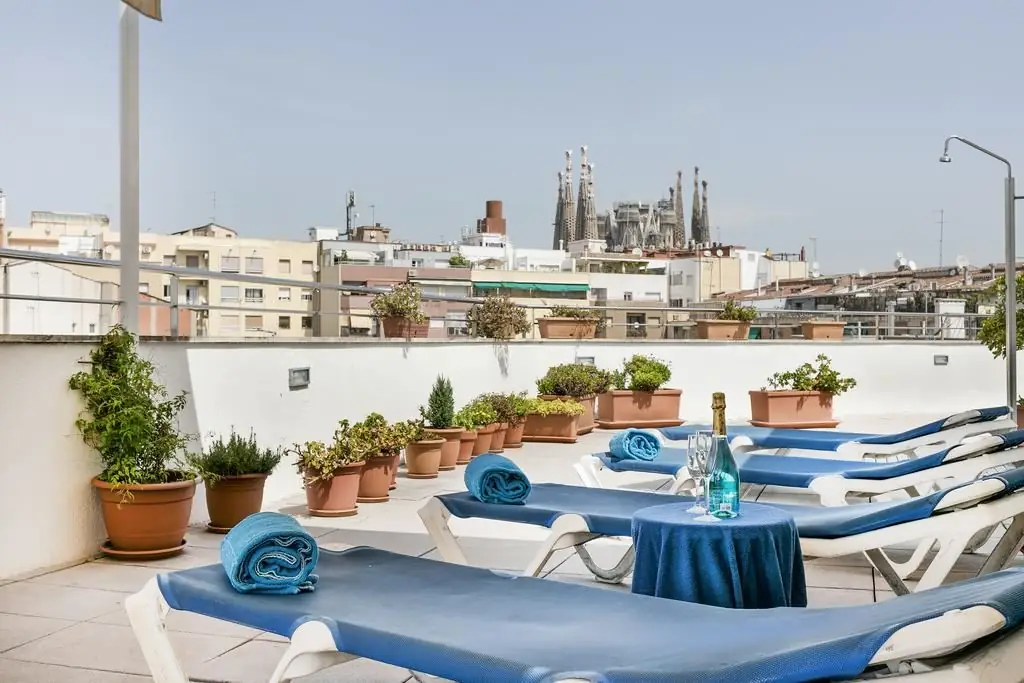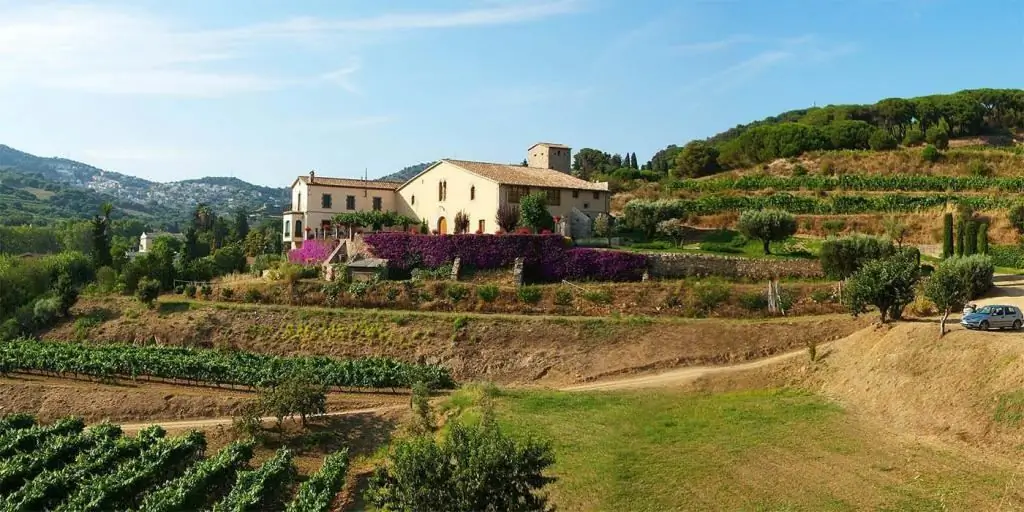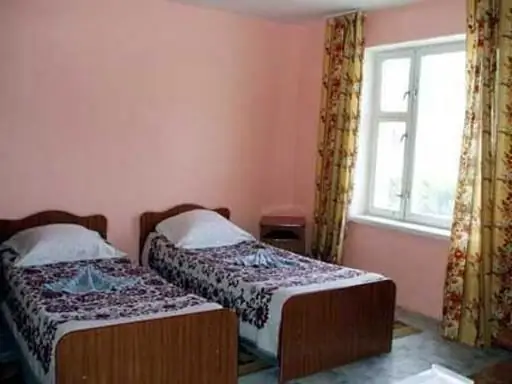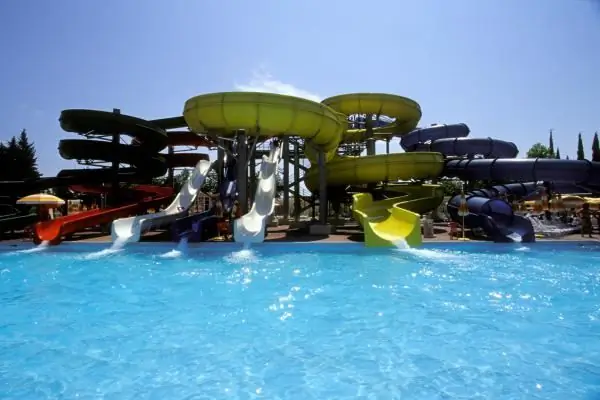- Author Harold Hamphrey [email protected].
- Public 2023-12-17 10:06.
- Last modified 2025-01-24 11:10.
Antonio Gaudí was a 19th-century Catalan architect known for his out-of-the-box thinking. That is why he managed to create such objects that still attract the eye, even when looking in the other direction. Casa Vicens is one of Gaudí's first projects. It is also the brightest and most memorable attraction in Barcelona. In subsequent works, the architect ignored straight lines and, it seems, all the laws of physics, and this house has a clear rectangular shape. Antonio Gaudi was endowed with phenomenal abilities - he never worked with drawings, he made all the calculations exclusively in his mind.

Order for the design of a private house
In 1878, Antonio Gaudí received a diploma in architecture and began to fulfill the order of Manuel Vicens, the owner of a factory for the production of bricks and ceramic tiles. The industrialist wanted a house to serve as his summer residence, so Gaudí decides to focus on the garden. By the way, the house of Vicens is very different from the subsequent works of the architect, as it hasstrict lines and rectangular shape.
A small area was allocated for development, but Gaudi coped with this problem: he moved the building to the background, due to which he managed to visually expand the garden area.

Vicens House (Antonio Gaudí): a description of the architect's early work
Even despite the strong difference between the first serious work and subsequent ones, this building deserves attention, as there are a lot of interesting and eye-catching details. The building stands out with beautiful turrets and elegant bay windows, carved balconies and surprisingly unusual facades.
The combination of shades is a separate issue. It seems that the best fusion of colors simply cannot be imagined. Moreover, the colorful color of the building not only attracts attention, but creates the illusion of volume. The facade is colorful, but this does not spoil it at all. On the contrary, the house turned out to be somehow “warm”.
Like any other architect, Gaudi sought to make the House of Vicens (Barcelona) stand out from the background of other buildings surrounding the object. All of them are made in an eclectic style, but Antonio decided to turn to modernity to achieve his goal.
It is important that each element has its place, and even the smallest details are in perfect harmony with each other. In other words, if something is removed, the picture will change dramatically. On the facade you can see images of the most popular flowers in Barcelona - marigolds. They were also planted in the garden, so the architect managed to achieve harmony between the building and the landscaped area. She seems towas a continuation of the residence.
The Vicens House was completed in 1885. In 1925, the owners decided to make a reconstruction, during which part of the garden was removed. Then the fence was demolished, the rotunda and the fountain with the cascade were removed. Therefore, the pristine beauty of Gaudí's early work has not survived to this day. Confirmation of this can be found when comparing the first photo with the subsequent ones.

The role of the House of Vicens in the career of the Catalan architect
Many believe that this project became a kind of starting point in the career of the then not very famous architect. Indeed, before Gaudi received the order, he participated in various competitions that did not bring any benefit, and was a draftsman in the architectural bureaus of the capital. In general, this man just needed to show what he was capable of, and Vicens, who became interested in the young talent, gave him a chance. Gaudi, it is worth confessing, used it to the fullest.
Where is Vicens' house?
The building is located in Barcelona (Spain), along Carrer de les Carolines, building 24. GPS coordinates: 41.40353435822368, 2.15064702698362.

Reviews of tourists
In 2005, the house was added to the UNESCO World Heritage List. Today, not a single tourist passes by - he will definitely stop to appreciate the smallest details in the exterior and enjoy the masterpiece produced by the young Catalan architect. Each person in the review tries to describe in their own words what impression they got when looking at the house of Vicens (Gaudi). Some people advise devoting a whole day to getting around all of Antonio's work in Barcelona. During such a short trip around the capital, it becomes possible to appreciate not only architectural structures, but also how Gaudí's style changed - his own, one and only. It is impossible not to recognize what the master brought into the world, and you can be sure that what was created by the mind and imagination of Gaudi will immediately catch your eye.
Tourists also emphasize that this architect's project is very different from all the others. But the bright facade attracts attention anyway, and this unites the Vicens' house with other objects. The only negative is the inability to go inside and see the interior of the summer residence.
Some reviews highlight such an interesting fact (but it is absolutely not confirmed by anything): since Gaudí's first serious customer was the owner of a ceramic tile factory, in his subsequent works the architect quite often preferred this particular material.

Other famous Gaudí works
Antonio Gaudí is a master with a capital letter, and his projects really deserve special attention. To appreciate the work of the architect, you do not need to go anywhere else - basically all the objects are located in Barcelona. So, after having examined the Vicens guest house, you can go to the next creations. These include the following:
- One of the most important buildings and the most famous work of the master is La Sagrada Familia (Sagrada Familia).
- Park Güell is the realstory. The project is dominated by fresco, from which fountains, sculptures and much more are created. If you look at the photo, the park seems a bit futuristic. There are also Güell wine cellars, Güell manor pavilions and Güell palace.
- House Batlló (or Bones) - in this project, the almost complete absence of straight lines is most clearly seen, only wavy outlines.
- House Mila is not only beautiful architecture, but also innovative ideas. For example, a natural ventilation system and the ability to move interior partitions.
So, once you are in Barcelona, the first thing you should do is go and see the creations of the great architect.






